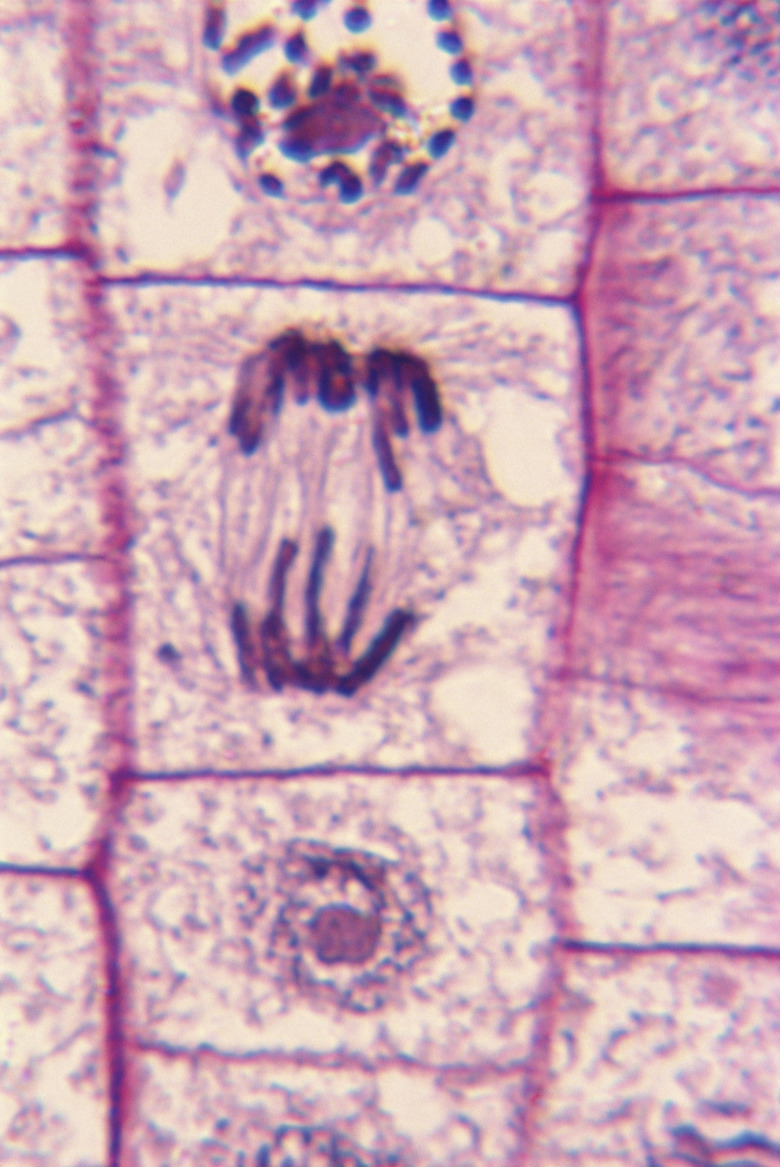What Are Twisted Strands Of DNA In The Nucleus Of The Cell Body?
Deoxyribonucleic acid, or DNA, is the material selected by nature to transmit the genetic code from one generation of a species to the next. Each species has a characteristic complement of DNA that defines the physical traits and some of the behaviors of individuals within the species. The genetic complement takes the form of chromosomes, which are twisted strands of DNA surrounded by proteins and housed within the cell's nucleus.
DNA Sweet and Tangy
DNA Sweet and Tangy
DNA is a long-chain polymer of alternating sugar and phosphate units. One of four different nucleotide bases — which are ring-shaped molecules containing nitrogen — hangs off each sugar group of the DNA backbone. The sequence of the four bases is the genetic code that specifies how the cell will build proteins. Your phenotype — that is, your physical structure and biochemical activity — is a result of the proteins your cells build. Most every cell in your body contains 23 chromosomes pairs that control which proteins each cell produces. Your mother contributes one set of pair members and your father contributes the other set.
Chromosomes Are Twisted
Chromosomes Are Twisted
Two strands of DNA come together to form the twisted spiral known as the double-helix structure. The bases of each strand bind to those of the other to hold the helix together. Proteins known as histones combine with DNA to create chromatin, the substance that forms the chromosomes. Histones help compress the DNA so that it will fit inside the cell nucleus. The proteins help strengthen and protect the DNA and are involved in controlling which areas of the chromosomes are expressed as proteins. These areas are called genes.
Genes Express Themselves
Genes Express Themselves
Genes occupy about 2 percent of your chromosomal real estate. The remainder serves several functions that help regulate gene expression and chromosome maintenance, although some portion is "junk DNA" that doesn't appear to serve any purpose other than occupying space. Genes express themselves in a two-step process in which the cell transcribes the genetic information to a strand of ribonucleic acid, RNA, that then carries the gene's message to the ribosomes for translation into protein.
Replicate This!
Replicate This!
Before a cell can divide, it must replicate its DNA so that each daughter cell receives a full set of chromosomes. Replication begins when helicase enzymes unzip a chromosome's double-helix DNA into two exposed strands. The enzyme DNA polymerase uses each existing strand as a template to create a new sister strand. The sequence of bases on the template determines the bases on the new strand according to rules that allow only certain pairings between nucleotides. The cell distributes the replicated chromosomes to each new daughter cell through the process of mitosis. The two new daughter cells form through cytokinesis, or cell division.
Cite This Article
MLA
Finance, Eric Bank, MBA, MS. "What Are Twisted Strands Of DNA In The Nucleus Of The Cell Body?" sciencing.com, https://www.sciencing.com/twisted-strands-dna-nucleus-cell-body-23153/. 24 April 2017.
APA
Finance, Eric Bank, MBA, MS. (2017, April 24). What Are Twisted Strands Of DNA In The Nucleus Of The Cell Body?. sciencing.com. Retrieved from https://www.sciencing.com/twisted-strands-dna-nucleus-cell-body-23153/
Chicago
Finance, Eric Bank, MBA, MS. What Are Twisted Strands Of DNA In The Nucleus Of The Cell Body? last modified August 30, 2022. https://www.sciencing.com/twisted-strands-dna-nucleus-cell-body-23153/
